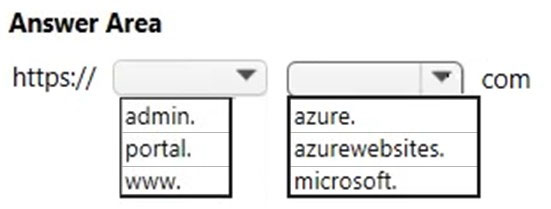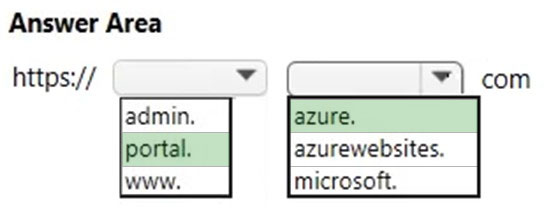| Question.51 To which cloud models can you deploy physical servers? (A) private cloud and hybrid cloud only (B) private cloud only (C) private cloud, hybrid cloud and public cloud (D) hybrid cloud only |
51. Click here to View Answer
Answer is (A) private cloud and hybrid cloud only
A private cloud is on-premises so you can deploy physical servers.
A hybrid cloud is a mix of on-premise and public cloud resources. You can deploy physical servers on-premises.
Reference:
https://azure.microsoft.com/en-gb/overview/what-is-hybrid-cloud-computing/
| Question.52 This question requires that you evaluate the underlined text to determine if it is correct. An Azure region contains one or more data centers that are connected by using a low-latency network. Instructions: Review the underlined text. If it makes the statement correct, select No change is needed. If the statement is incorrect, select the answer choice that makes the statement correct. (A) No change is needed (B) Is found in each country where Microsoft has a subsidiary office (C) Can be found in every country in Europe and the Americas only (D) Contains one or more data centers that are connected by using a high-latency network |
52. Click here to View Answer
Answer is (A) No change is needed
A region is a set of data centres deployed within a latency-defined perimeter and connected through a dedicated regional low-latency network. Microsoft Azure currently has 55 regions worldwide.
Regions are divided into Availability Zones. Availability Zones are physically separate locations within an Azure region. Each Availability Zone is made up of one or more datacenters equipped with independent power, cooling, and networking.
References:
https://azure.microsoft.com/en-gb/global-infrastructure/regions/
| Question.53 This question requires that you evaluate the underlined text to determine if it is correct. One of the benefits of Azure SQL Data Warehouse is that high availability is built into the platform. Instructions: Review the underlined text. If it makes the statement correct, select No change is needed. If the statement is incorrect, select the answer choice that makes the statement correct. (A) No change is needed (B) automatic scaling (C) data compression (D) versioning |
53. Click here to View Answer
Answer is (A) No change is needed
Azure Data Warehouse (now known as Azure Synapse Analytics) is a PaaS offering from Microsoft. As with all PaaS services from Microsoft, SQL Data Warehouse offers an availability SLA of 99.9%. Microsoft can offer 99.9% availability because it has high availability features built into the platform.
References:
https://docs.microsoft.com/en-us/azure/sql-data-warehouse/sql-data-warehouse-overview-faq
| Question.54 You plan to store 20 TB of data in Azure. The data will be accessed infrequently and visualized by using Microsoft Power BI. You need to recommend a storage solution for the data. Which two solutions should you recommend? (A) Azure Data Lake (B) Azure Cosmos DB (C) Azure SQL Data Warehouse (D) Azure SQL Database (E) Azure Database for PostgreSQL |
54. Click here to View Answer
Answers are; A & C
Azure Data Lake
Azure SQL Data Warehouse
You can use Power BI to analyze and visualize data stored in Azure Data Lake and Azure SQL Data Warehouse.
Azure Data Lake includes all of the capabilities required to make it easy for developers, data scientists and analysts to store data of any size and shape and at any speed, and do all types of processing and analytics across platforms and languages. It removes the complexities of ingesting and storing all your data while making it faster to get up and running with batch, streaming and interactive analytics. It also integrates seamlessly with operational stores and data warehouses so that you can extend current data applications.
References:
https://docs.microsoft.com/en-us/azure/data-lake-store/data-lake-store-power-bi
https://azure.microsoft.com/en-gb/solutions/data-lake
| Question.55 You have an Azure environment that contains 10 web apps. To which URL should you connect to manage all the Azure resources?  |
55. Click here to View Answer

The Azure portal is a web-based management interface where you can view and manage all your Azure resources in one unified hub, including web apps, databases, virtual machines, virtual networks, storage and Visual Studio team projects.
References:
https://azure.microsoft.com/en-gb/features/azure-portal/
